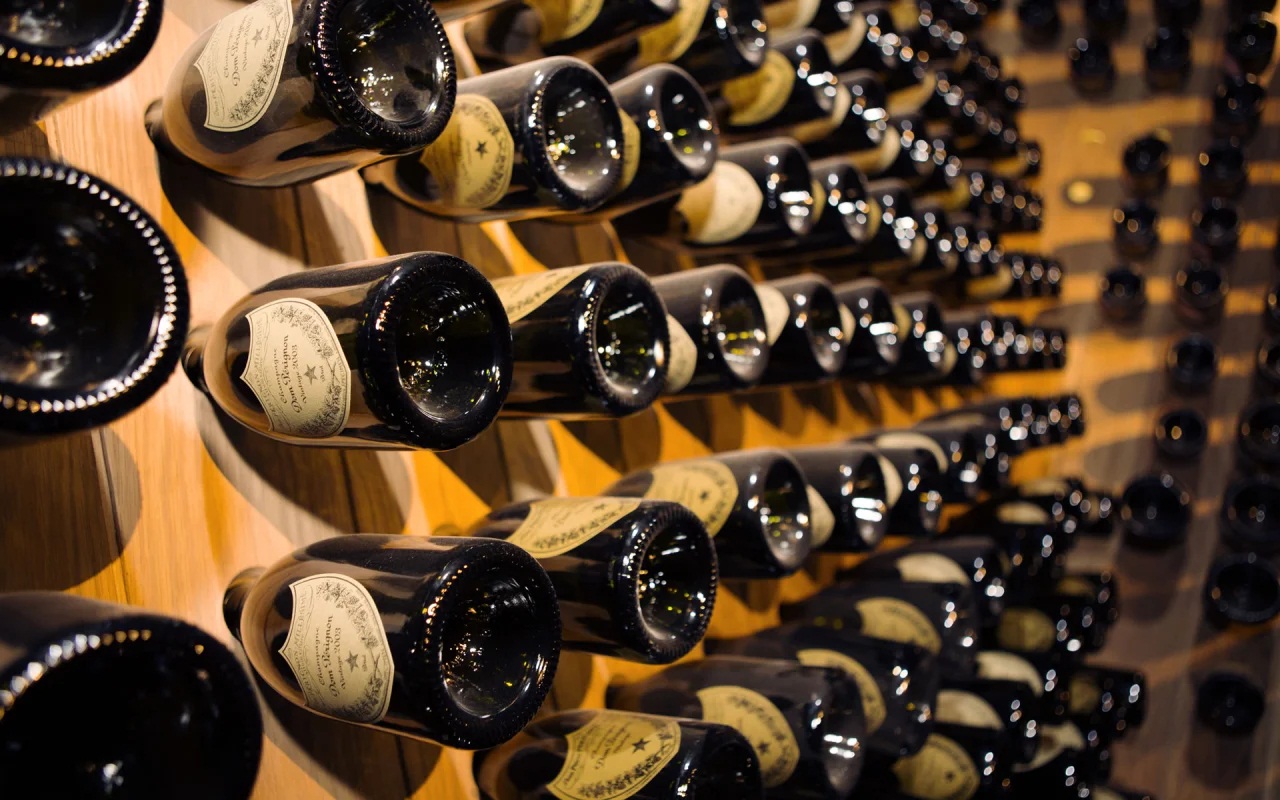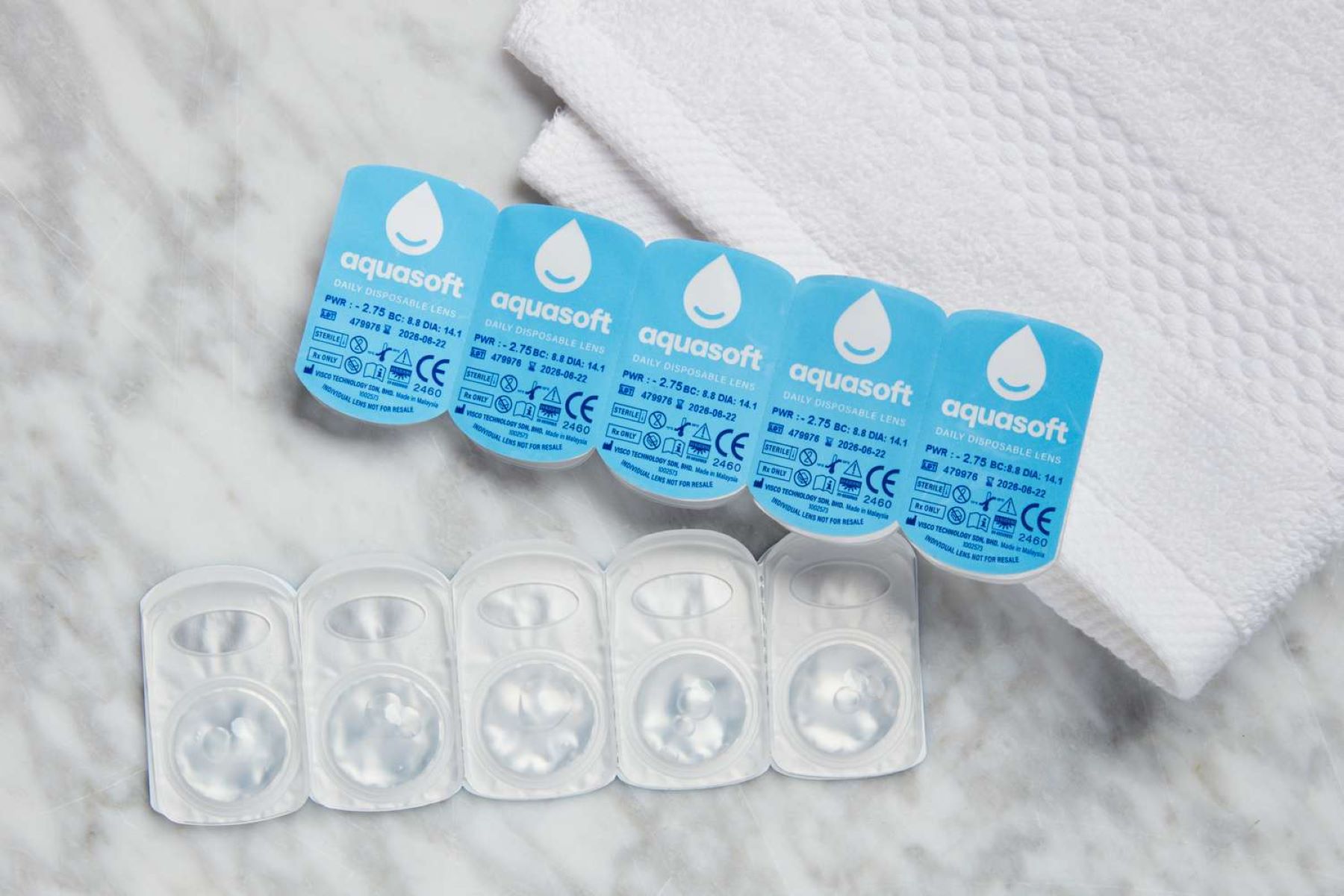

Articles
How To Store Prosecco Unopened
Modified: February 24, 2024
Learn the proper way to store unopened Prosecco to keep it fresh and bubbly. Follow these articles for tips and tricks on storing and preserving your favorite sparkling wine.
(Many of the links in this article redirect to a specific reviewed product. Your purchase of these products through affiliate links helps to generate commission for Storables.com, at no extra cost. Learn more)
Introduction
Prosecco is a delightful sparkling wine that has gained immense popularity in recent years. With its crisp taste and refreshing bubbles, it has become a favorite choice for celebrations, gatherings, and casual get-togethers. However, when it comes to storing Prosecco, proper care should be taken to ensure its quality remains intact until it’s time to pop the cork.
In this article, we will explore the importance of storing Prosecco correctly and provide you with valuable tips on how to store Prosecco unopened. By understanding the best practices for storage, you can enjoy every sip of Prosecco as if it were freshly opened, even weeks or months later.
So, let’s dive into the world of Prosecco and discover how to preserve its flavors and effervescence!
Key Takeaways:
- Preserve the Bubbles: Store Prosecco in a cool, dark place away from heat and light to maintain its effervescence and vibrant flavors, ensuring a delightful drinking experience whenever you uncork a bottle.
- Long-Term Enjoyment: Follow best practices for long-term storage, including optimal temperature and humidity, to age Prosecco gracefully and savor a well-preserved bottle for a special occasion.
Read more: How To Store Prosecco
Understanding Prosecco
Before we delve into the finer details of storing Prosecco, let’s take a moment to understand what Prosecco is and why it requires special attention when it comes to storage.
Prosecco is a sparkling wine that originates from the Veneto region in Italy. It is primarily made from Glera grapes, although other grape varieties such as Chardonnay, Pinot Bianco, and Pinot Grigio may also be used. Prosecco is known for its light and fruity flavors, characterized by notes of apple, pear, and citrus.
Unlike traditional Champagne, which undergoes secondary fermentation in the bottle, Prosecco is typically produced using the Charmat method. This means that the second fermentation takes place in a large tank, resulting in a wine with a fresher and fruitier profile.
Due to its production method and flavor profile, Prosecco is best consumed when it is young and still possesses its vibrant flavors and lively bubbles. However, if stored improperly, Prosecco can lose its fizziness and develop off-flavors, resulting in a disappointing drinking experience.
With this understanding, let’s explore the factors that play a crucial role in ensuring the proper storage of Prosecco.
Importance of Proper Storage
When it comes to Prosecco, storage conditions can greatly impact its taste, aroma, and overall quality. Proper storage is essential to preserve its effervescence and prevent the development of off-flavors. Here are a few reasons why proper storage is crucial for Prosecco:
Maintaining Carbonation: Prosecco gets its signature bubbles from carbon dioxide, which is produced during the fermentation process. If the bottle is not stored correctly, the carbonation may escape, resulting in a flat and dull Prosecco.
Preserving Freshness: Prosecco is known for its fresh and vibrant flavors. Exposure to light, heat, or oxygen can cause the wine to oxidize and lose its aromatic qualities, leaving you with a lackluster drinking experience.
Preventing Spoilage: Improper storage can lead to spoilage and the growth of bacteria or yeast in the bottle. This can not only affect the taste and aroma of the Prosecco but also pose health risks if consumed.
Maximizing Enjoyment: Storing Prosecco properly allows you to enjoy it at its best. By maintaining its carbonation, freshness, and flavors, you can savor every sip of Prosecco as if you were drinking it right after opening the bottle.
To ensure your Prosecco remains in top condition, it’s important to consider various factors such as temperature control, light exposure, humidity levels, and bottle position. In the following sections, we will explore each of these factors in detail and provide you with practical tips for storing Prosecco unopened.
Choosing the Right Location
When it comes to storing Prosecco, choosing the right location plays a crucial role in maintaining its quality. Here are some factors to consider when selecting the ideal storage spot:
Away from Heat Sources: Prosecco should be kept away from direct sunlight and heat sources such as radiators, ovens, or stoves. Excessive heat can alter the wine’s composition, causing it to lose its freshness and develop undesirable flavors.
Cool and Consistent Temperature: The storage location should have a cool and consistent temperature. Ideally, the temperature should be around 45-50°F (7-10°C). Fluctuations in temperature can accelerate the aging process and negatively impact the quality of the Prosecco.
Avoiding Extreme Cold: While it’s important to keep Prosecco cool, it should not be exposed to extreme cold temperatures. Freezing can cause the wine to expand and potentially lead to a broken bottle or compromised flavors.
Absence of Strong Odors: Prosecco has a delicate flavor profile and can easily absorb odors from its surroundings. It is best to store Prosecco away from strong-smelling substances, such as cleaning agents, spices, or foods with pungent aromas.
Stable Environment: The storage location should have a stable environment with minimal vibration. Vibrations can disturb the sediment in the bottle and affect the quality of the Prosecco. Avoid placing Prosecco near appliances or areas with frequent movement.
Consider these factors when selecting the storage location for your Prosecco. A cool, dark, and undisturbed area, such as a cellar, pantry, or wine refrigerator, can provide the ideal conditions for preserving the qualities of Prosecco.
In the next section, we will explore temperature control, which is another critical aspect of Prosecco storage.
Temperature Control
Temperature control is a key factor in ensuring the proper storage of Prosecco. Fluctuations in temperature can have a significant impact on the wine’s flavor, carbonation, and overall quality. Here are some tips for maintaining optimal temperature:
Consistent Cool Temperature: Prosecco should be stored at a consistent temperature of around 45-50°F (7-10°C). Avoid exposing it to extreme heat or cold, as it can affect the wine’s characteristics.
Avoid Rapid Temperature Changes: Rapid temperature changes can shock the wine and lead to loss of carbonation. It’s best to store Prosecco in an environment with minimal temperature fluctuations.
Wine Refrigerators or Cool Cellars: Investing in a wine refrigerator or utilizing a cool cellar can provide an ideal and controlled temperature for storing Prosecco. These specialized storage solutions are designed to maintain the perfect temperature for wines.
Avoid Refrigerating for Extended Periods: While it’s acceptable to chill Prosecco in the refrigerator before serving, it’s not recommended to store it there for an extended period. The constant vibration and low humidity levels in a typical refrigerator can negatively impact the quality of the wine.
Consider Ambient Room Temperature: If a wine refrigerator or cool cellar is not available, choose a storage location where the ambient room temperature remains relatively cool and stable throughout the year.
By carefully controlling the temperature, you can preserve the freshness, effervescence, and flavors of Prosecco. This ensures that when you finally uncork the bottle, you’ll be greeted with a delightful and satisfying experience.
In the next section, we will discuss the importance of avoiding light exposure in Prosecco storage.
Read more: How To Store Unopened Coconut
Avoiding Light Exposure
Light exposure can have a detrimental effect on the quality of Prosecco. Ultraviolet (UV) rays from both natural and artificial light sources can break down organic compounds in the wine, leading to oxidation and the development of unpleasant flavors. Here are some ways to protect Prosecco from light exposure:
Store in Dark Areas: Choose a storage location that is dark or has minimal exposure to light. Avoid placing Prosecco near windows or areas with direct sunlight. Ultraviolet rays can penetrate through clear glass bottles and degrade the wine over time.
Use Tinted or UV-Protected Bottles: Some Prosecco producers use tinted or UV-protected bottles to help shield the wine from light. These bottles provide an additional layer of protection against potentially harmful UV rays.
Wrap Bottles with Foil or Protective Sleeves: If your Prosecco bottles are clear or lightly tinted, you can further protect them by wrapping them with foil or using protective sleeves specifically designed to block out light.
Store in Cardboard Boxes or Wine Racks: Storing Prosecco in cardboard boxes or in a wine rack can offer additional protection from light. These storage solutions help create a dark environment and minimize exposure to direct light.
By keeping Prosecco away from light exposure, you can preserve its delicate flavors, ensure it maintains its vibrant appearance, and enjoy a bottle of Prosecco that is as fresh and enjoyable as it was when it was first purchased.
In the next section, we will discuss the importance of maintaining the appropriate humidity levels in Prosecco storage.
Store unopened Prosecco in a cool, dark place away from direct sunlight and temperature fluctuations. Keep the bottle upright to prevent the cork from drying out. Avoid storing in the refrigerator for extended periods as it can affect the flavor.
Maintaining Humidity Levels
Humidity levels play a significant role in the proper storage of Prosecco. While it may not be as critical as other factors like temperature and light exposure, maintaining appropriate humidity levels can help preserve the integrity of the wine. Here’s why humidity matters and how to maintain it:
Avoiding Cork Drying Out: Prosecco bottles are typically sealed with a cork, which can dry out if exposed to low humidity. A dried-out cork can shrink, allowing air to enter the bottle and potentially spoil the wine. Aim for a humidity level of around 70% to prevent the cork from drying out.
Preventing Label Damage: High humidity can cause the labels on Prosecco bottles to peel or become discolored. It’s important to strike a balance and avoid excessive humidity levels that may damage the aesthetic appeal of the bottles.
Using Wine Cellars or Humidifiers: Wine cellars are designed to maintain appropriate temperature and humidity levels for wine storage. If you have a wine cellar, it will likely provide the ideal humidity conditions. Alternatively, you can use a humidifier specifically designed for wine storage to add moisture to the environment.
Avoiding Excess Moisture: While humidity is essential, excessive moisture can promote mold growth and damage the labels or packaging of Prosecco bottles. It’s important to monitor humidity levels and ensure they remain within the desired range without crossing into high humidity territories.
By maintaining the appropriate humidity levels, you can ensure that the cork remains moist, preventing oxidation and preserving the quality of the Prosecco. This, coupled with proper temperature and light control, will help you enjoy a Prosecco that is fresh and full of flavor.
In the next section, we will discuss whether Prosecco should be stored upright or stored flat.
Keeping Prosecco Upright or Stored Flat
When it comes to storing Prosecco, there is often a debate about whether it should be kept upright or stored flat. Both methods have their benefits and considerations, and it ultimately depends on the type of closure used in the bottle. Here’s a breakdown of each method:
Upright Storage: Storing Prosecco upright is recommended when it has a traditional cork closure. Keeping the bottle upright helps to keep the cork moist, preventing it from drying out and minimizing the risk of oxidation. This method is commonly used for wines that have the potential to age and develop complexity over time.
Flat Storage: If your Prosecco bottle has a crown cap or a synthetic closure, storing it flat is acceptable. The carbonation in Prosecco helps to create a protective layer on the surface, reducing the risk of oxidation. However, it’s important to note that storing wine flat for an extended period may cause sediment to accumulate along the side of the bottle, which can affect the appearance when poured.
Whether you choose to store your Prosecco upright or flat, consider the type of closure used and the desired aging potential of the wine. If you’re unsure, it’s generally safer to store Prosecco upright, especially if it has a traditional cork closure.
Regardless of the storage method, it’s essential to handle Prosecco bottles with care to avoid excessive movement or agitation. We’ll cover this in more detail in the next section.
Now that we’ve discussed various storage methods, let’s explore some best practices for long-term storage of Prosecco.
Avoiding Vibrations or Movement
Prosecco, like any other wine, is sensitive to vibrations and excessive movement. Vibrations can disturb the sediment in the bottle, disrupt the aging process, and potentially affect the overall quality of the wine. Here are some tips to avoid vibrations and movement during Prosecco storage:
Store Prosecco Away from Appliances or Machinery: Keep Prosecco bottles away from appliances, machinery, or any areas with frequent movement. Vibrations from these sources can negatively impact the wine over time.
Avoid Frequent Handling: Try to minimize the handling of Prosecco bottles, especially those that are intended for long-term storage. Frequent movement and agitation can disturb the sediment and potentially affect the aging process.
Securely Position Prosecco Bottles: Ensure that Prosecco bottles are securely positioned and will not be easily jostled or knocked over. Use wine racks or storage boxes that can safely hold the bottles in place.
Transport Prosecco Bottles with Care: When transporting Prosecco bottles, take precautions to prevent excessive shaking or movement. Use padded or protective packaging to safeguard the bottles and minimize any potential vibrations during transit.
By avoiding vibrations and excessive movement, you can maintain the integrity of the Prosecco and ensure that it ages gracefully, retaining its flavors and characteristics. Now, let’s move on to the best practices for long-term storage of Prosecco.
In the next section, we will discuss some guidelines to follow for storing Prosecco over an extended period of time.
Read more: How To Store Unopened Botox
Best Practices for Long-Term Storage
Prosecco, like many wines, is meant to be enjoyed while it’s still young and fresh. However, if you have a special bottle of Prosecco that you’d like to save for a special occasion or age for a longer period, following these best practices for long-term storage can help preserve its quality:
Optimal Temperature and Humidity: Maintain a cool and consistent temperature of around 45-50°F (7-10°C) and a humidity level of about 70%. This will help ensure the Prosecco ages gracefully and avoids any premature deterioration.
Dark and Undisturbed Environment: Store the Prosecco in a dark area that is protected from direct light to prevent the wine from being exposed to harmful UV rays. Avoid areas with excessive vibrations or movement to allow the sediment to settle undisturbed.
Proper Bottle Position: For Prosecco with traditional cork closures, store the bottles upright to keep the cork moist and prevent it from drying out. For bottles with crown caps or synthetic closures, storing them flat is acceptable, but be mindful of possible sediment accumulation over time.
Regular Monitoring: Periodically check on your stored Prosecco to ensure the bottles are intact and there are no signs of leakage or spoilage. This allows you to address any issues promptly and prevent further damage to the wine.
Consideration of Aging Potential: Keep in mind that Prosecco is typically best enjoyed within a few years of its release. While some Proseccos may develop interesting flavors and complexities with age, most are intended for immediate consumption. Make sure you are familiar with the aging potential of the specific Prosecco you have before deciding to store it long-term.
By following these best practices, you can maximize the potential of your stored Prosecco and enjoy a well-aged bottle when the time comes. Remember to take into account the specific characteristics and recommendations provided by the producer of the Prosecco you have.
Now, let’s wrap up our discussion.
Conclusion
Prosecco is a delightful sparkling wine that deserves proper storage to ensure its flavors and effervescence remain intact. By following the best practices outlined in this article, you can preserve the quality of your Prosecco and enjoy it as if it were freshly opened, even months or years later.
Understanding the characteristics of Prosecco, such as its delicate flavors and reliance on carbonation, is essential in determining the best storage conditions. Factors such as temperature control, light exposure, humidity levels, and bottle position all play a crucial role in maintaining the quality of Prosecco.
Choosing the right storage location away from heat sources, maintaining a consistent cool temperature, and avoiding extreme temperature changes are vital for preserving the flavors and carbonation of Prosecco. Additionally, preventing light exposure by storing Prosecco in a dark area helps protect it from UV rays, which can negatively impact its taste and aroma.
Maintaining appropriate humidity levels and storing Prosecco bottles upright or flat depending on the closure type are also important considerations. By avoiding vibrations and excessive movement, you can prevent disturbance to the wine and allow it to age undisturbed.
Finally, for long-term storage, adhering to best practices such as maintaining optimal conditions, regular monitoring, and considering the aging potential of Prosecco will help you enjoy a well-aged and satisfying bottle when the time is right.
Remember, while these guidelines can enhance the storage and longevity of Prosecco, it’s essential to note that Prosecco is typically meant to be enjoyed while it’s still young and fresh. Ageing Prosecco may yield mixed results depending on the specific wine, so it’s always a good idea to consult the producer’s recommendations and guidelines.
With proper storage and care, you can uncork a bottle of Prosecco and savor every sip, whether it’s days or months after purchase. Cheers to enjoying a perfectly preserved Prosecco anytime you desire!
Frequently Asked Questions about How To Store Prosecco Unopened
Was this page helpful?
At Storables.com, we guarantee accurate and reliable information. Our content, validated by Expert Board Contributors, is crafted following stringent Editorial Policies. We're committed to providing you with well-researched, expert-backed insights for all your informational needs.














0 thoughts on “How To Store Prosecco Unopened”